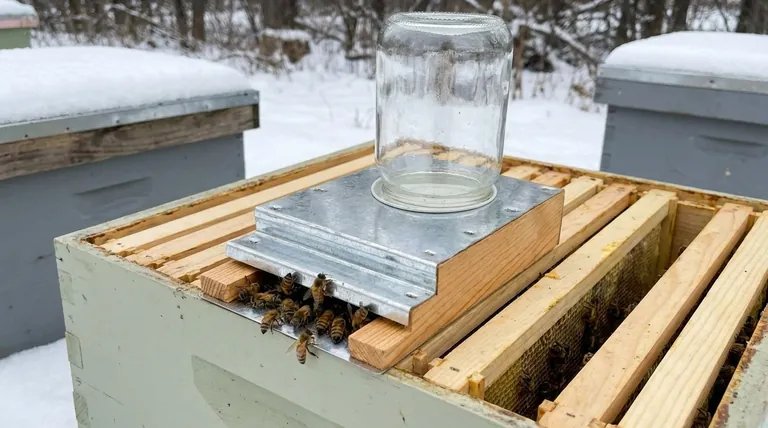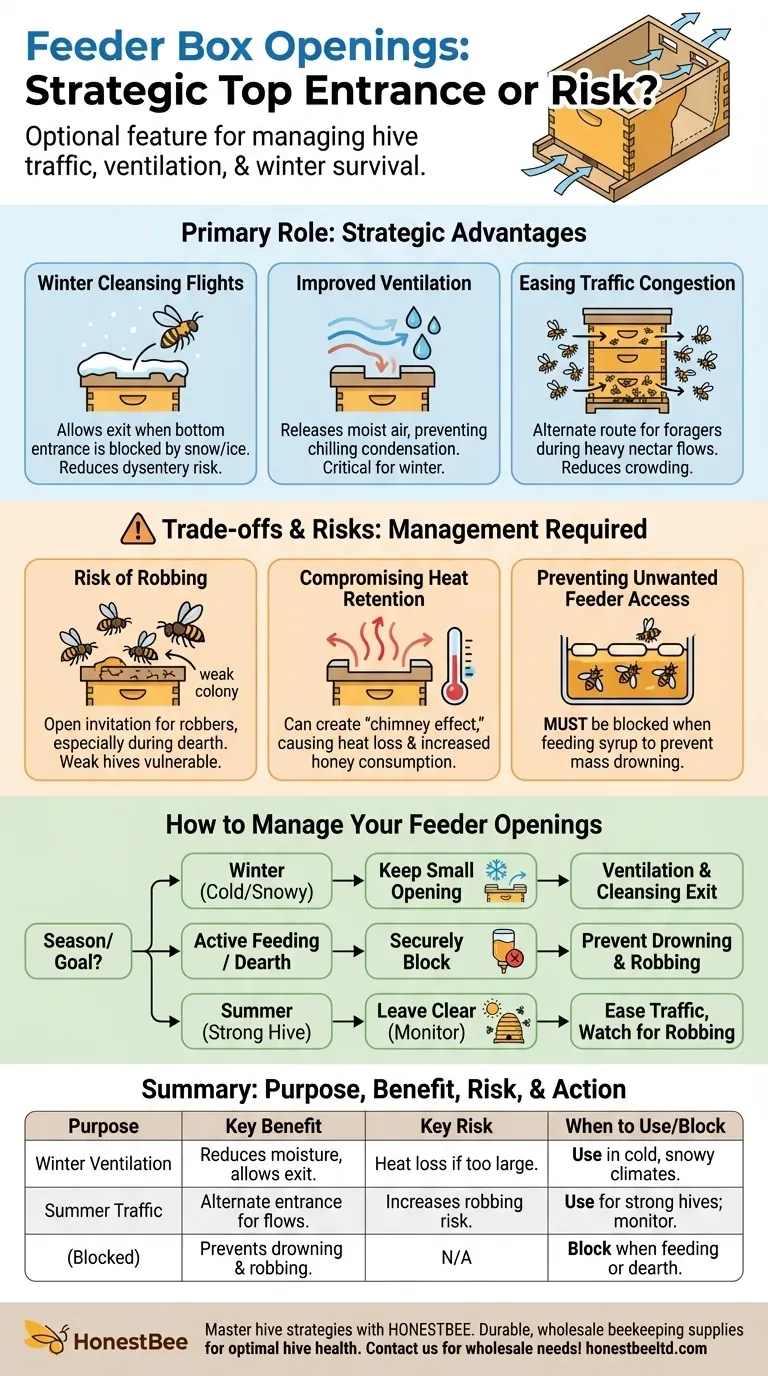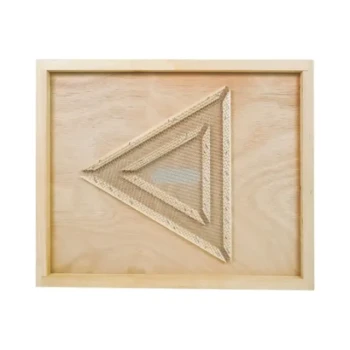In short, those openings are designed to be an optional top entrance or exit for the bees. They are a deliberate feature, not a manufacturing flaw, left by the dado cuts used to assemble the feeder's floor. While seemingly minor, they provide a strategic tool for managing hive traffic, ventilation, and winter survival.
The decision to use or block these openings is a key management choice. Leaving them open provides benefits for wintering and ventilation, but creates risks of robbing and heat loss that must be carefully considered based on your climate and the colony's strength.

The Primary Role: A Strategic Top Entrance
Understanding when to use this feature is crucial. In certain situations, a top entrance offers significant advantages over the standard bottom entrance.
Facilitating Winter Cleansing Flights
In regions with heavy snowfall, the main bottom entrance can become blocked by snow, ice, or the accumulation of dead bees.
A clear top entrance allows bees to exit for essential "cleansing flights" (to defecate) on milder winter days without navigating a blocked or cold lower passage. This reduces the risk of dysentery inside the hive.
Improving Hive Ventilation
Moisture is a greater threat than cold to a wintering colony. As bees consume honey and respire, they release warm, moist air.
A small top opening acts as a vent, allowing this damp air to escape. This dramatically reduces condensation from forming and dripping back down onto the cluster, which can chill and kill the bees.
Easing Traffic Congestion
During a very heavy nectar flow, a strong, populous colony can experience significant congestion at the main entrance.
An upper entrance provides an alternate route for foragers, potentially increasing the efficiency of nectar collection by reducing traffic jams.
Understanding the Trade-offs and Risks
A top entrance is not always beneficial. It introduces specific risks that you must be prepared to manage.
The Risk of Robbing
An undefended top entrance is an open invitation for robber bees from other colonies, especially during a nectar dearth when resources are scarce.
Weaker colonies may not have enough guard bees to defend both a top and bottom entrance, making them highly vulnerable to being robbed out.
Compromising Heat Retention
While ventilation is good, too much airflow can be detrimental. A top entrance can create a "chimney effect," allowing precious warm air to escape.
This forces the winter cluster to consume more honey stores to generate heat, potentially leading to starvation in a long, cold winter. The opening should be small to balance ventilation with heat retention.
Preventing Unwanted Feeder Access
If you are actively using the box to feed syrup, these end-openings must be blocked.
Bees will quickly learn to use them as a shortcut directly into the syrup reservoir, bypassing the intended floats or ladders. This inevitably leads to mass drowning.
How to Manage Your Feeder Openings
Your decision to use or block these openings should be based on the season, your climate, and the specific goal you are trying to achieve.
- If your primary focus is winter survival in a cold, snowy climate: Keep one opening clear to provide crucial ventilation and an exit for cleansing flights, but ensure it is small enough to minimize heat loss.
- If your primary focus is preventing robbing or drowning: Securely block both openings with a small piece of wood, cork, or foam whenever you are actively feeding syrup or notice robbing pressure in your apiary.
- If your primary focus is managing a strong hive in summer: You can leave the openings clear to ease traffic congestion during a heavy nectar flow, but always monitor for any signs of robbing from weaker hives.
Ultimately, managing these small openings is a reflection of your attunement to the colony's seasonal needs.
Summary Table:
| Purpose of Openings | Key Benefit | Key Risk | When to Use/Block |
|---|---|---|---|
| Winter Ventilation & Cleansing Flights | Reduces moisture, prevents condensation, allows exit if bottom entrance is blocked. | Heat loss if opening is too large. | Use in cold, snowy climates for wintering. |
| Easing Summer Traffic Congestion | Provides alternate entrance during heavy nectar flow for strong hives. | Increases risk of robbing from weaker colonies. | Use for strong hives in summer; monitor for robbing. |
| N/A (Openings Blocked) | Prevents bees from drowning in syrup and deters robber bees. | N/A | Block when actively feeding syrup or during nectar dearth. |
Master hive ventilation and feeding strategies with the right equipment. HONESTBEE supplies durable, well-designed beekeeping supplies and equipment to commercial apiaries and beekeeping equipment distributors through wholesale-focused operations. Let us help you equip your operation for optimal hive health year-round.
Contact HONESTBEE today to discuss your wholesale needs!
Visual Guide

Related Products
- Boardman Entrance Bee Feeder Durable Galvanized Steel and Wood Construction for Beekeeping
- Classic Boardman Entrance Bee Feeder Hive Front Feeding Solution
- HONESTBEE Entrance Bee Feeder Professional Hive Nutrition Solution for Beekeeping
- Professional Hive Front Entrance Bee Feeder
- HONESTBEE Entrance Bee Feeder Efficient Hive Front Liquid Feeding Solution for Beekeeping
People Also Ask
- What is an entrance feeder? A Guide to Its Simple Design and High Robbing Risk
- What are the different types of feeders available for beehives? A Guide to Entrance, Hive-Top, and Frame Feeders
- What types of bee feeders are available for beginners? Start with the Simple Entrance Feeder
- How does the entrance feeder method work? A Guide to Simple But Risky Hive Feeding
- How do you make an entrance feeder for bees? A Guide to Safe & Effective Hive Feeding



















